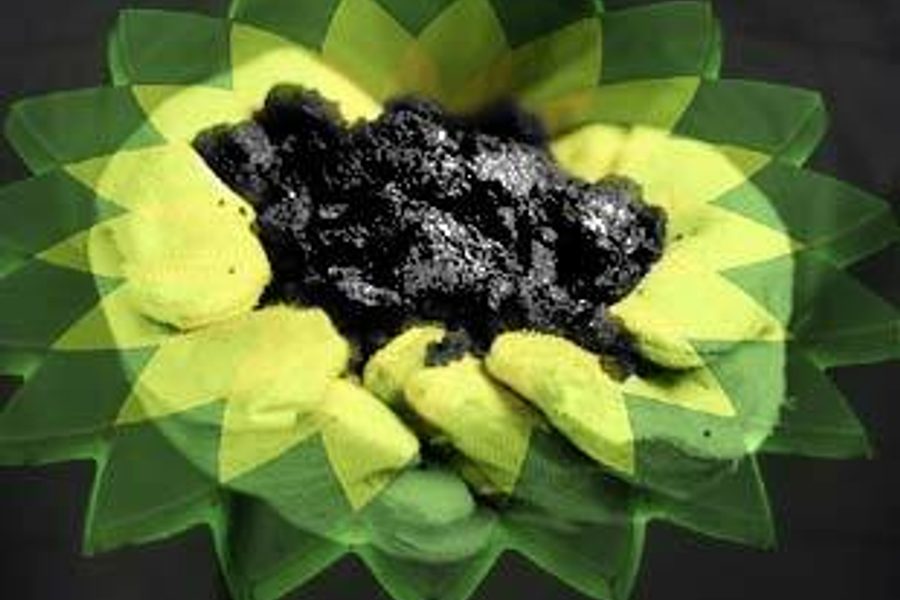
In 1997, after British Petroleum publicly acknowledged the harmful effects of global warming, it quickly became known as the oil company with environmental virtue.
While other oil corporations argued that climate change didn’t exist – most notably Exxon Mobil, which funded around 40 public policy groups that disputed the scientific grounds for global warming – BP was investing in emission reductions, going so far as to support the Kyoto Protocol, the international agreement established to curb greenhouse gases, which took effect in 2005.
In 2005, BP Alternative Energies announced it would manage an investment program in solar and wind technologies, one that could amount to $8 billion over seven years. The company also marketed itself as an environmentally friendly oil corporation dedicated to moving “beyond petroleum.”
But a recent change in corporate policy threatens that green-friendly image. It’s a policy that Greenpeace calls “the biggest environmental crime in history.”
The policy involves BP breaking its long-standing, self-imposed ban on the production of crude oil from tar sands – which are a combination of clay, sand, various minerals and bitumen – found in the Canadian wilderness.
The process of extracting and refining tar sands – also known as Canadian crude – involves strip-mining a 50,000-square-mile span of forest (approximately the size of Florida) located in the western Canadian province of Alberta. The region contains an estimated 175 billion barrels of recoverable oil.
BP’s decision to tap into the Canadian wilderness is “based on addiction, not reality,” says Ann Alexander, senior attorney at the Natural Resources Defense Council (NRDC), a nonprofit environmental group. “Tar sands crude oil is dirty from start to finish. It’s bad enough that [BP is] fouling our natural resources here in the Midwest, but it’s completely destroying them up in Canada. There are good sources of energy we can turn to that don’t involve turning entire forests into a moonscape.”
For oil corporations hoping to extract crude from the area, access is often a major hurdle. Bitumen is thick, which means tar sands can’t be pumped from the ground the same way traditional oil is. Tar sands need to be mined, and the deeper they are beneath the earth’s surface, the more difficult – and harmful – the extraction.
In Alberta’s case, nearly 80 percent of the oil lays so deep underground that it needs to be either injected with steam or put through a “fireflood” process, which introduces compressed air to the bitumen and burns the oil for better flow. To extract a single barrel of bitumen from tar sands requires an energy input of 250 cubic feet of natural gas.
The first step, then, involves razing vast amounts of wilderness for open-pit mining – meaning that small plants, trees and topsoil must be extracted by the ton. And because five barrels of water are typically needed to produce a single barrel of crude, surrounding rivers must be routed to the pits, then re-routed to man-made lakes of toxic sludge.
But the leveling of the Canadian wilderness is only the beginning. Once the forest and wildlife are out of the way and the pits have been dug, the raw process of extraction requires substantial manpower, heavy machinery (some of which can be up to three stories tall and weigh as much as a jetliner) and an incredible amount of energy. And that’s to produce only a single barrel of unrefined crude oil from two tons of tar sands.
Also, because of the machinery involved, tar sand extraction generates up to four times more carbon dioxide than conventional drilling. Over the next seven years, global warming pollutants released into the atmosphere from tar sands oil production are projected to quintuple to 126 megatons, up from 25 megatons in 2003, according to the Pembina Institute, a nonprofit environmental group based in Canada.
What’s more, the tar sands industry consumes enough gas in a single day to heat approximately 4 million American homes, according to the NRDC.
Yet none of these estimates has deterred BP from going forward with a plan to produce 200,000 barrels of Canadian crude per day over the next 15 years.
Tar sand boom
One of the biggest hurdles in combating the Albertan tar sand boom is Canada’s lack of environmental standards and regulations. Canada doesn’t have a Clean Air Act like the United States does, only guidelines. And even the guidelines the national government has in place can be circumvented by powers granted to each province. The Albertan government, in fact, has openly stated that it is not in line with the Kyoto Protocol, a direct rebuff to Canada’s national pledge.
The question then raised, says Melanie Nakagawa, attorney for the NRDC’s International Program, is “should the provinces have authority over global warming emissions?”
Currently, 16 percent of American oil imports comes from Alberta. And with corporations such as BP, Royal Dutch Shell and Exxon already committed to investing $125 billion in imports from Alberta over the next 20 years, that percentage will only increase. Of the 1.25 million barrels extracted daily from the sands, 1 million of it goes directly to the United States. By 2020, that number could be as high as 5 million, according to the NRDC.
“Canadian crude is simply the absolute wrong direction,” the NRDC’s Alexander says. “If you look at the new technology we have regarding much cleaner resources, we should decide what is best. That is not Canadian crude. It’s destructive on every level.”
Perched along Lake Michigan
Once crude is extracted from the tar sands, it still needs to be refined before it can be used. For the most part, that refinement takes place in the United States – and creates another set of environmental hazards in the process.
In Whiting, Ind., where one of BP’s refineries is perched along Lake Michigan’s shores, the company is undergoing a $3.8 billion expansion that will allow it to refine crude oil originating from Canadian tar sands. The expansion, which will be completed by 2011, will allow BP to refine 260,000 barrels of Canadian crude per day, triple its current capacity.
Canadian crude contains more sulfur and carbon than traditional oil. According to Simon Dyer, oil sands program director and policy director for the Pembina Institute, this means that the process of refining heavier oil has the potential to release up to four times more greenhouse gases.
In a Nov. 30 statement, the Environmental Protection Agency (EPA) alleged that the BP refinery in Whiting made equipment modifications that resulted in a significant increase in sulfur dioxide, particulate matter and carbon monoxide emissions. All are ozone-depleting chemicals that BP, according to its website, is working to reduce “before it is required by international and national obligations.”
The EPA stated that in 2006, BP made modifications to the fluidized catalytic cracking unit at its Whiting plant. Developed in 1942 by Exxon, this unit converts heavier oil, such as crude, into lighter, more valuable products like gasoline and naphtha (a mixture used as feedstock for producing high octane gas).
These allegations come at a time when the Indiana Department of Environmental Management (IDEM) is reviewing the company for an update to its air emissions permit. (BP has sought higher thresholds in the amount of pollutants it releases.)
The review has drawn comparisons to the controversial water permit that IDEM issued to BP in summer 2007. According to IDEM Assistant Commissioner for the Office of Air Quality Dan Murray, as was the case with the water permit, the air permit renewal is a reflection of the Whiting expansion.
BP has already withdrawn from IDEM’s proposed Prevention of Significant Deterioration (PSD) permit, which would have forced BP to take expensive steps to reduce emissions. If BP had accepted the PSD permit, it would have been required to install the latest pollution control technology and prove that its upgrades would not harm the environment.
The NRDC’s Alexander has seen these methods before. The water permit that IDEM granted BP made Indiana’s anti-degradation laws almost meaningless, she says. And backing off the PSD permit could mean BP has some new tricks up its sleeves.
“It’s in BP’s interest to get around the need for a PSD permit,” Alexander says. “They can potentially accomplish that either with real emissions reductions or with funny math.”
Tar sands extraction isn’t just another hurdle for environmentalists to combat. It merely reveals a simple truth: when it comes to “being green,” even the most publicly boastful of the oil corporations – such as BP – will keep their promises only as far as their bottom line allows. Without action, it’s empty rhetoric.
As the world continues to crawl toward environmental sustainability, tar sands extraction, says Nakagawa, is “scraping the bottom of the barrel to get our energy needs.”






